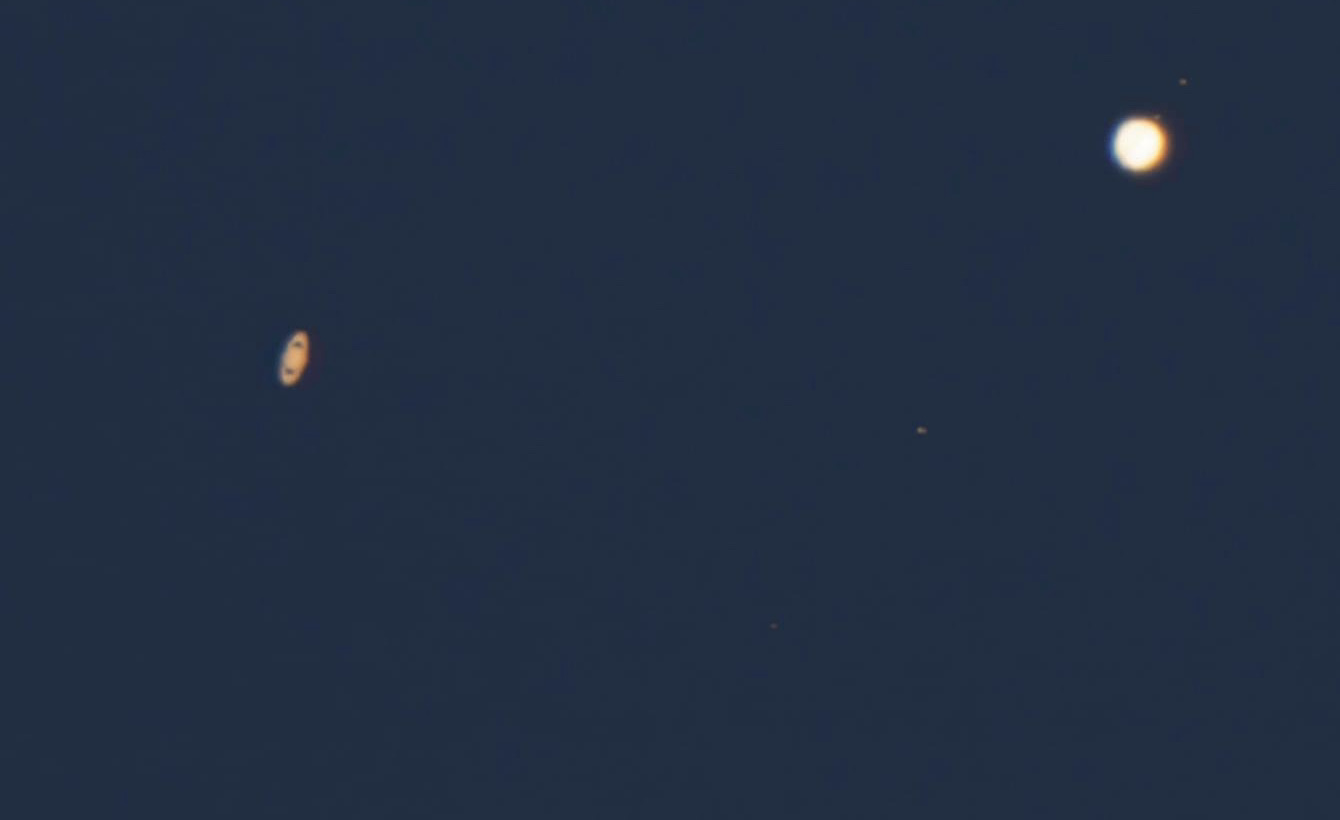Rare Jupiter-Saturn conjunction piques astronomers’ interest

By Shaurya Kshatri, Kathmandu, Dec. 21: On the night of December 21, stargazers across Nepal witnessed a rare celestial event -- the conjunction of Jupiter and Saturn. The planets appeared extremely close to each other, making them look like one bright dot in the sky.
“The two planets were very close so much so that they were separated by just one-tenth of a degree,” informed Suresh Bhattarai, Astrophysicist and Chairman of Nepal Astronomical Society (NASO).
Talking about the celestial event, Bhattarai said that the two planets were aligned so close to one another since 1623. “Back then, it had only been about a decade since the telescope was invented,” he adds. After almost four centuries, Saturn and Jupiter, the two giant stars in our solar system came this close to each other.
The rare phenomenon was visible from all over the world and was seen without any special instruments. Shrijan Gyawali, a 10th grader from Ramghat, Pokhara was static to observe the planets shining bright. “My father told me about it, and I had been gazing at the night sky since five in the evening,” says Shrijan.
Unfortunately, for Kalanki-based astronomy enthusiast Bikash Gyawali, 25, the light pollution didn’t lend a proper view of the once-in-a-lifetime event. “Thanks to the floodlights from the nearby construction sites nothing was visible,” bemoans Gyawali.
The NASO also hosted a private star party at their offices from 5:00 PM- 6:30 PM, which was accessible for their members only due to the COVID-19 situation.
“We had an excellent observation cum interaction session witnessing the great conjunction,” claimed chairman Bhattarai. “It might have been difficult to view the planets with a naked eye given the haze and light pollution but with binoculars or a telescope, the view was exceptional,” said Bhattarai.
Every night during December, the two planets progressively approached one another finally culminating in a climax on December 21.
According to astronomers, the next one is likely to take place in 2080.
This planetary conjunction also coincides with the winter solstice in the northern hemisphere, and is known as the year's shortest day.
Recent News

Do not make expressions casting dout on election: EC
14 Apr, 2022
CM Bhatta says may New Year 2079 BS inspire positive thinking
14 Apr, 2022
Three new cases, 44 recoveries in 24 hours
14 Apr, 2022
689 climbers of 84 teams so far acquire permits for climbing various peaks this spring season
14 Apr, 2022
How the rising cost of living crisis is impacting Nepal
14 Apr, 2022
US military confirms an interstellar meteor collided with Earth
14 Apr, 2022
Valneva Covid vaccine approved for use in UK
14 Apr, 2022
Chair Prachanda highlights need of unity among Maoist, Communist forces
14 Apr, 2022
Ranbir Kapoor and Alia Bhatt: Bollywood toasts star couple on wedding
14 Apr, 2022
President Bhandari confers decorations (Photo Feature)
14 Apr, 2022










